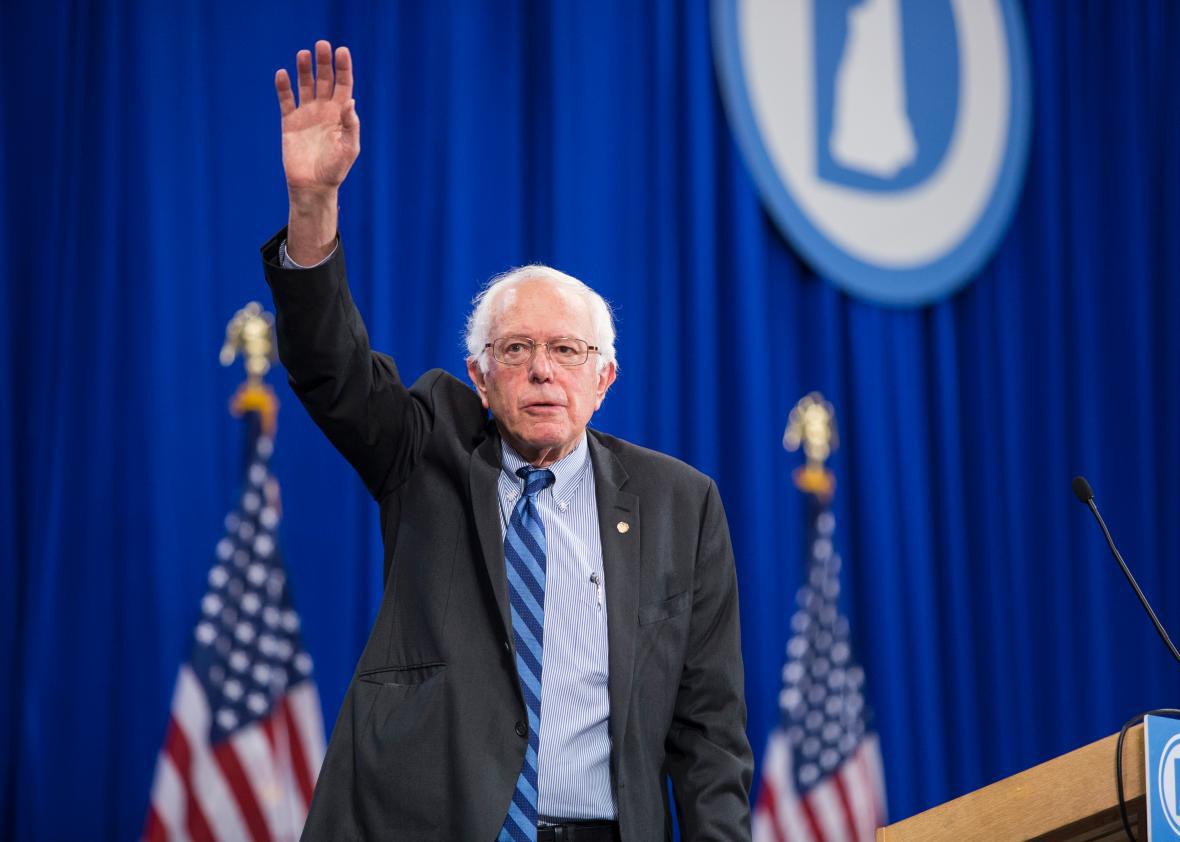Bernie Sanders seems to have found a new favorite line about student debt—or at least one he’s decided is worth repeating. Here’s the man in mid-October.
And here he was over the weekend.
Sanders’ argument is, well, nonsense. From an economic and policy perspective, there are in fact many good reasons why some people have to pay more for a student loan than for a mortgage or car loan. And the fact that he has trouble recognizing that is symptomatic of a larger liberal blind spot when it comes to thinking about student loans.
Why are student loans sometimes more expensive than mortgages? For starters, they aren’t backed by an asset. If you default on your truck or condo, a bank can repossess it. But the Department of Education can’t take your political science degree. Instead, it has to send a debt collector your way to recoup whatever money it can. The government has lots of power on this front—student loans are nearly impossible to discharge in bankruptcy, and the feds can garnish your wages if they see fit—but it still typically loses money on defaults thanks to the cost of paying those collection agencies.
This is all especially important because the Department of Education doesn’t do much underwriting. The government will give anybody a loan to go to college, no matter how bad or nonexistent their credit histories might be, and charge them the same interest rate. This is wonderfully progressive. But it means that the government has to charge higher rates overall than if it were only lending to people with spotless personal finances. Moreover, it also means that comparing the flat rate on federal undergraduate student loans to the lowest available rates on mortgage or auto loans is misleading, since rock bottom mortgages and car loans are only available to people with good credit.
I know what you’re thinking now. But the student loan program is run at a profit. Why not lower rates so it just breaks even? The thing to remember here is that, on net, those profits don’t come from undergraduate lending. They come from loans taken out by parents (who are disproportionately sending their children to private colleges) and graduate students (who end up disproportionately wealthy). If social justice is your main concern, offering those borrowers cheaper debt shouldn’t be a particularly high priority, especially since they are perfectly capable of going and finding a private loan if they think there’s a company willing to offer them a better deal. Now, the government could theoretically take it profits from lending to parents and lawyers/doctors/McKinsey consultants in training and plow them into cutting undergraduate rates even further. But then that raises another question: Why not spend the money elsewhere? After all, every dollar devoted to lowering student loan rates is a dollar that could be used increasing funding for the Pell grant program, which specifically targets low- and middle-income students.
Sanders’ supporters would probably point out here that the man has a plan to eliminate tuition at public colleges, which he’d like to fund with a tax on Wall Street. But even so, that doesn’t mean student-loan profits couldn’t be used more productively on grants to help poor undergrads cover living expenses, rather than lowering rates for Harvard and community college students alike.1
Bernie Sanders isn’t the only Democrat to make erroneous comparisons between student loans and other kinds of debt—Elizabeth Warren basically patented the move. But it speaks to the weird lens through which liberals view this issue. Student loans have somewhat high interest rates compared with certain other consumer debt available to low-risk borrowers—and let’s be real, at 4.29 percent, today’s undergraduate loan rates aren’t that high—because the government doesn’t just lend to low-risk borrowers. It lends to pretty much anyone, and lets wealthier, safer borrowers subsidize poorer, less safe ones. In other words, the system is fairly progressive, and toying with it shouldn’t be a first-order priority for those who want to make college more affordable. Insofar as we want to devote more resources to higher education, we shouldn’t be worrying about making debt cheaper. We should be making sure needier students don’t have to take out debt at all.
1The one reason to consider lowering student loan interest rates instead of spending more money on a program like Pell would be to stop private lenders from picking off the most reliable borrowers, who subsidize everybody else in the federal program. That’s become a bit of an issue thanks to refinancing companies like SoFi. But as of now, it’s not widespread enough yet to be a major concern.
